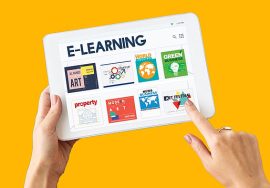
Microlearning vs. Traditional Training: Which One Works Best?
In today’s fast-paced world, organizations are rethinking how they train employees. With attention spans shrinking and workloads increasing, is traditional training still effective, or is microlearning the way forward?
What is Microlearning?
Microlearning is a bite-sized learning approach where information is delivered in short, engaging modules. These lessons typically last from a few seconds to 10 minutes and focus on a single objective.
Key Features of Microlearning:
- Short and Focused: Lessons are concise and to the point.
- Flexible: Accessible anytime, anywhere via mobile device.
- Engaging: Uses videos, quizzes, infographics, and interactive elements.
- Performance-Oriented: Designed for quick application in real-world scenarios.
What is Traditional Training?
Traditional training follows a structured, in-depth format where employees undergo classroom-style or instructor-led learning sessions. This approach provides comprehensive knowledge but often requires more time and resources.
Key Features of Traditional Training:
- Comprehensive: Covers topics in-depth with detailed explanations.
- Instructor-Led: Typically involves live trainers, mentors, or classroom settings.
- Fixed Schedule: Requires dedicated training sessions.
- Assessments & Certifications: Often includes exams, evaluations, and certificates.
Microlearning vs. Traditional Training: A Detailed Comparison
Feature | Microlearning | Traditional Training |
Time Investment | Short, quick lessons (seconds to minutes) | Long sessions (hours to days) |
Flexibility | Anytime, anywhere access | Requires scheduled attendance |
Engagement | Highly interactive, visual, and gamified | Can be lecture-heavy and passive |
Retention | Focused on small knowledge chunks for better recall | Large amounts of information at once can overwhelm learners |
Cost-Effective | Less expensive, no venue or instructor costs | Higher costs for trainers, venues, and materials |
Best For | On-the-go learning, skill reinforcement, and just-in-time training | Deep learning, certifications, and technical skill mastery |
Which One Works Best?
Microlearning is Best For:
- Employees who need quick access to training materials.
- Continuous learning and skill reinforcement.
- Mobile-friendly, remote-friendly work environments.
- Topics requiring high engagement (e.g., compliance, product updates).
Traditional Training is Best For:
- In-depth topics requiring step-by-step guidance.
- Compliance training with certifications and formal assessments.
- Team-building exercises, role-playing, and hands-on workshops.
- Employees who thrive in a structured classroom setting.
“Microlearning improves learners’ focus and retention by up to 80%.”
The Best Approach: A Blended Learning Strategy
While microlearning and traditional training each have strengths, the best solution often lies in a blended approach. Organizations can use traditional training for foundational knowledge while incorporating microlearning for reinforcement and on-the-go learning.
Frequently Asked Questions (FAQs)
- Is microlearning suitable for all industries?
Yes, microlearning is adaptable to various industries, including healthcare, IT, retail, and corporate training. However, for complex technical subjects, it works best when combined with traditional training. - Can traditional training be converted into microlearning?
Yes, traditional training modules can be broken down into bite-sized lessons, making them more engaging and easier to digest. - Does microlearning replace the need for trainers?
Not necessarily. Trainers can still play a role in curating microlearning content, providing feedback, and offering deeper insights where needed. - How does microlearning improve retention?
Microlearning focuses on delivering small, manageable chunks of information, reducing cognitive overload and enhancing long-term retention. - What is the best way to implement microlearning?
Use multimedia-rich content (videos, infographics, quizzes), ensure lessons are short and goal-oriented, and integrate them into employees’ daily workflows.
Conclusion
Both microlearning and traditional training have their place in corporate learning. Microlearning is ideal for fast, engaging, and mobile-friendly learning experiences, while traditional training remains valuable for comprehensive, structured learning. A blended approach can help organizations maximize the benefits of both methods, ensuring employees stay engaged, informed, and productive.
Looking to implement an effective learning strategy for your organization? Contact us today to explore our digital learning solutions!






